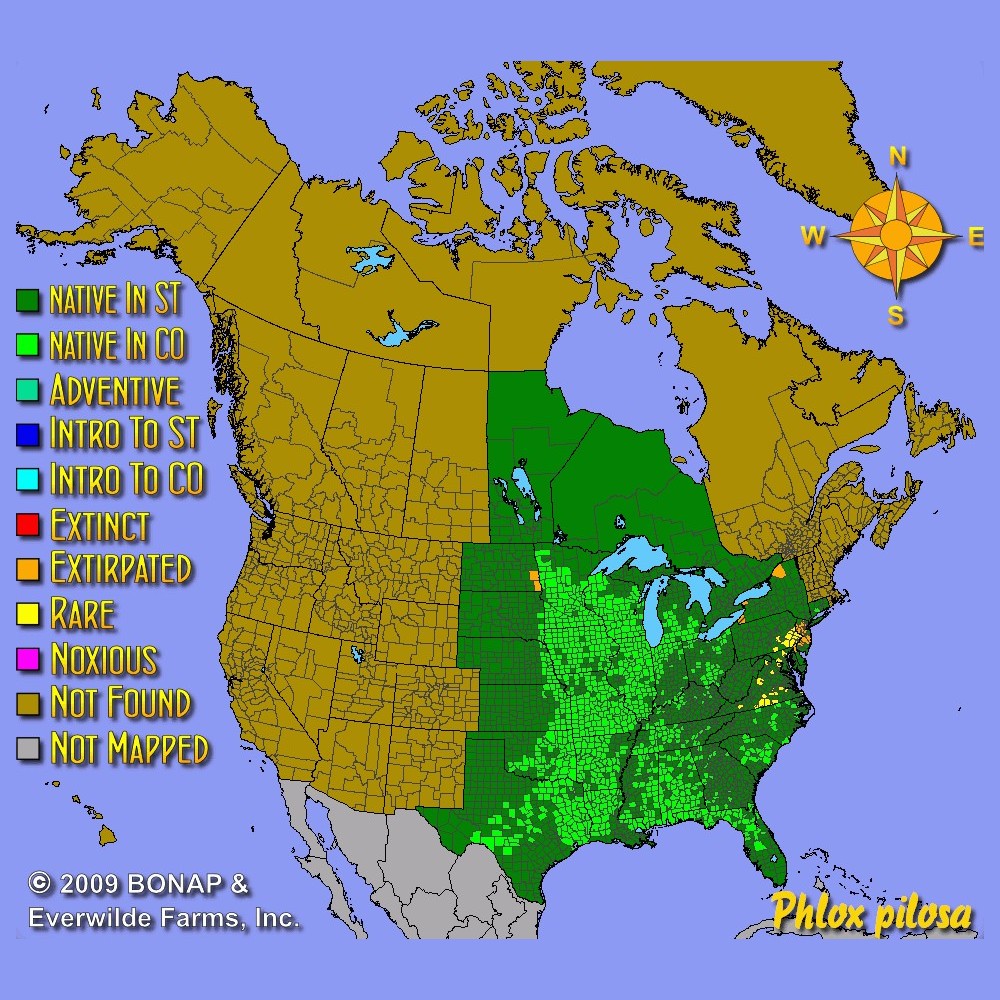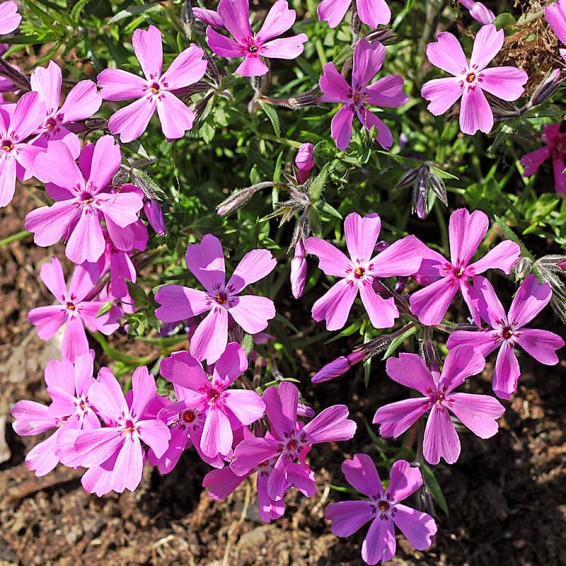Prairie Phlox Seeds
- HOW TO GROW
- FAST FACTS
- REVIEWS
HOW TO GROW
Sowing: Direct sow in late fall, planting just below the surface of the soil. For spring planting, mix the prairie phlox seeds with moist sand and store in the refrigerator for 60 days before planting. Keep the soil lightly moist until germination. This Phlox Pilosa seed can also be started indoors 6-8 weeks before planting in the spring; the best temperature for germination is 65 degrees F.
Growing: Water seedlings until they become established. Mature plants tolerate occasional drought, though they prefer moist soil and will benefit from watering in dry weather. Deadhead for increased blooming. If seeds are not required, cut the plant back after blooming has finished. This plant often spreads, and is highly attractive to bees, hummingbirds, and butterflies. This plant makes an excellent choice for borders or containers, and tolerates clay soil.
Harvesting: For cut flowers, choose stems with flowers that have just opened. Strip the foliage that will fall below the water level, and place in water immediately.
Seed Saving: After the flowers fade, small pods will form that eventually open and release their seeds. Gather the pods as soon as they have begun to turn brown, but before they burst open; watch them carefully to prevent loss, since the seeds can easily be blown away by the wind. Spread the pods out to dry. As soon as they have completely dried, break open the pods and remove the seed. Store the prairie phlox seed in a cool, dry place.
FAST FACTS
Common Names: Downey Phlox, Ozark Phlox
Latin Name: Phlox pilosa
Species Origin: US Native Wildflower
Type: Native Wildflowers
Life Cycle: Perennial
USDA Zones: 3, 4, 5, 6, 7, 8, 9
US Regions: Plains/Texas, Midwest, Northern, Northeast, Southeast
Seeds per Ounce: 18,900
Stratification: Cold/Wet for 8 Weeks
Germination Ease: Stratify 8 Weeks
Sunlight: Full Sun, Part Sun
Height: 20 Inches
Color: Pink
Bloom Season: Blooms Late Spring, Blooms Early Summer
Uses: Attracts Pollinators, Hummingbirds, Aromatic, Cut Flowers, Deer Resistant
Loves Florida soil!
Phlox really performs well in the Florida soil. Great purchase to consider for the southland.
Excellent selection
Nice variety.
So far so good
Seeds arrived quickly after ordered in a durable foil packet with detailed planting instructions and care on the packet. So far so good. Very pleased with product.
DESCRIPTION

HOW TO GROW
Sowing: Direct sow in late fall, planting just below the surface of the soil. For spring planting, mix the prairie phlox seeds with moist sand and store in the refrigerator for 60 days before planting. Keep the soil lightly moist until germination. This Phlox Pilosa seed can also be started indoors 6-8 weeks before planting in the spring; the best temperature for germination is 65 degrees F.
Growing: Water seedlings until they become established. Mature plants tolerate occasional drought, though they prefer moist soil and will benefit from watering in dry weather. Deadhead for increased blooming. If seeds are not required, cut the plant back after blooming has finished. This plant often spreads, and is highly attractive to bees, hummingbirds, and butterflies. This plant makes an excellent choice for borders or containers, and tolerates clay soil.
Harvesting: For cut flowers, choose stems with flowers that have just opened. Strip the foliage that will fall below the water level, and place in water immediately.
Seed Saving: After the flowers fade, small pods will form that eventually open and release their seeds. Gather the pods as soon as they have begun to turn brown, but before they burst open; watch them carefully to prevent loss, since the seeds can easily be blown away by the wind. Spread the pods out to dry. As soon as they have completely dried, break open the pods and remove the seed. Store the prairie phlox seed in a cool, dry place.
FAST FACTS
Common Names: Downey Phlox, Ozark Phlox
Latin Name: Phlox pilosa
Species Origin: US Native Wildflower
Type: Native Wildflowers
Life Cycle: Perennial
USDA Zones: 3, 4, 5, 6, 7, 8, 9
US Regions: Plains/Texas, Midwest, Northern, Northeast, Southeast
Seeds per Ounce: 18,900
Stratification: Cold/Wet for 8 Weeks
Germination Ease: Stratify 8 Weeks
Sunlight: Full Sun, Part Sun
Height: 20 Inches
Color: Pink
Bloom Season: Blooms Late Spring, Blooms Early Summer
Uses: Attracts Pollinators, Hummingbirds, Aromatic, Cut Flowers, Deer Resistant
Reviews
Review
Loves Florida soil!
Phlox really performs well in the Florida soil. Great purchase to consider for the southland.
Review
Excellent selection
Nice variety.
Review
So far so good
Seeds arrived quickly after ordered in a durable foil packet with detailed planting instructions and care on the packet. So far so good. Very pleased with product.





